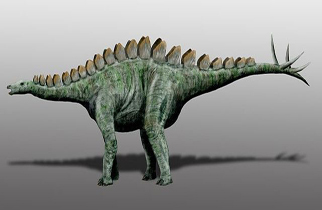
Miragaia Dinosaur is an intriguing dinosaur species that lived during the Late Jurassic period, approximately 150 million years ago. It belongs to the group of herbivorous dinosaurs known as stegosaurs, which are characterized by their iconic rows of plates and spikes along their backs. Miragaia provides valuable insights into the diversity and evolution of stegosaurs.
Miragaia was a medium-sized dinosaur, estimated to have reached lengths of around 20 to 26 feet (6 to 8 meters). It had a slender and elongated body, with a long neck and tail. One of the most distinctive features of Miragaia was its remarkable row of long, pointed spikes running along its back and tail, which were used for defense and display. Miragaia possessed an unusually high number of vertebrae in its long tail. The tail featured four pairs of long, upright spikes at the tip, creating an impressive visual display.
Miragaia Facts :
| Name: | Miragaia Dinosaurs |
| Size: | 6 to 8 meters |
| Main Facts: | Miragaia is an intriguing dinosaur species that lived during the Late Jurassic period, approximately 150 million years ago. |
The purpose of this unique tail structure is still a topic of scientific study and debate. It may have served as a means of visual communication among individuals, or it could have been used for interspecific combat or as a display to attract mates. Miragaia had a relatively small head with a beaked mouth and sharp, leaf-shaped teeth. These teeth were adapted for feeding on vegetation, likely including ferns, cycads, and other plants that were abundant in its Late Jurassic environment.
Fossil remains of Miragaia have been found in Portugal. The discovery of this dinosaur in Europe expands our understanding of stegosaurs, which were primarily known from fossils found in North America and China. Miragaia likely inhabited forested areas and shared its ecosystem with other dinosaurs of the time, such as sauropods and theropods.